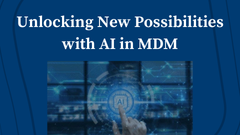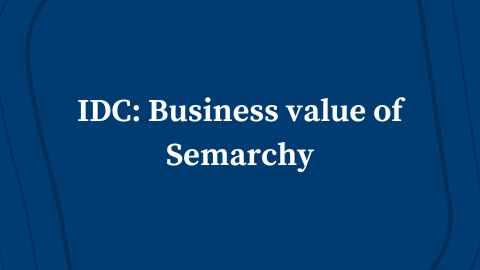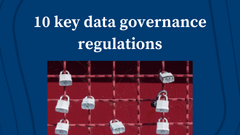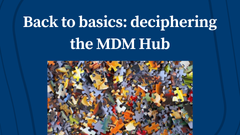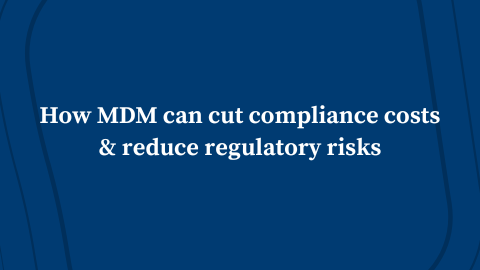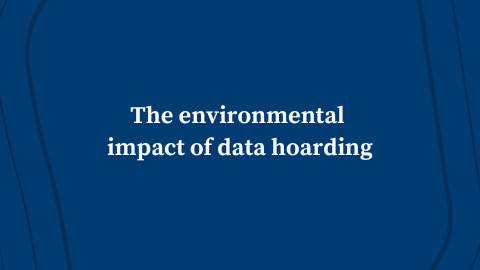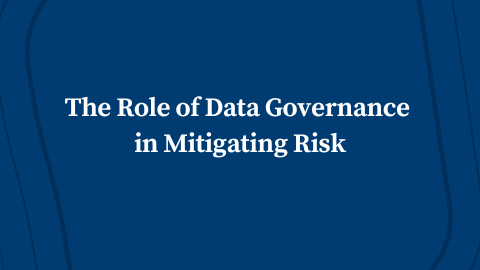By Scott Moore, Director of Presales, Semarchy
What is an Enterprise Data Hub (EDH)?
Not long ago, Gartner analysts coined a new term within the data and analytics industry — the Enterprise Data Hub (EDH) — to reflect a streamlined, purposeful, and governed data activity that supported agility.
Shortly after the introduction of this concept, various data technology vendors began incorporating the phrase “Data Hub” into their naming, leading to confusion around exactly how to define and architect these hubs.
To clarify these rising questions, Gartner’s EDH concept was later refined into the Intelligent Data Hub (IDH): a software platform featuring robust capabilities for data discovery, integration, management, governance, measurement, and monitoring.
The data hub traverses multiple applications, providing governance and quality insights to effectively manage an organization’s core data assets, including customers, products, accounts, locations, employees, suppliers, and more.
The Origin and Evolution of Master Data Hub
At its core, the IDH deals with Master Data Management (MDM), a discipline that traditionally had a clear definition and purpose — focusing principally on mastering business data with pre-defined, hard-coded governance rules. Despite its clear objectives, many companies historically struggled to successfully implement MDM projects due to complexity, cost, and risks associated with achieving a single, enterprise-wide agreement on data semantics.
Recognizing the challenges, analytics-driven organizations gradually shifted from broad, enterprise-level integrations toward smaller, localized data hubs serving specific analytics and operational needs. This movement didn’t signify abandoning MDM altogether, but rather adopting more enabled and agile approaches.
Master Data Hub Patterns – Getting Back to Basics
These localized hubs rely on centralized MDM “Hubs” — databases for storing and managing Master Data, Reference Data, and Golden Data. To effectively understand these hubs, we need to revisit some of the fundamental architectural patterns of MDM hubs, each serving specific business needs and use-cases:
1. Registry Hub Style
In this pattern, master data remains in the source systems. The MDM hub stores only cross-references and indexes to source data and performs federation downstream. While this model is entirely non-intrusive, it faces potential performance challenges when assembling and transforming large-scale data dynamically.
2. Consolidation Hub Style
Master data is copied from source systems, matched and consolidated in the hub, then made available to downstream systems. This pattern alleviates performance challenges of the registry model, with stewardship processes orchestrated directly within the hub.
3. Co-Existence Hub Style
This approach builds upon the consolidation style but includes an integration loop that pushes Golden Data back into source applications. Although non-intrusive from an end-user perspective, it introduces notable organizational and technical challenges—for example, by embedding golden data views directly in user interfaces (“portlets”).
4. Centralized/Transactional Hub Style
The most intrusive — but often highest quality — approach involves fully migrating data authoring away from original systems to the MDM hub. Here, the hub becomes the single source of truth, authoring and governing data through data entry workflows. Enterprises most often use this style when operational processes lack established formal MDM, such as replacing Excel spreadsheets or informal data repositories.
Is there a single “best” pattern for all master data? Probably not. Depending on domains, source applications, and the maturity of enterprise processes, organizations might select one or even combine several of these patterns over time.
Introducing the Convergence Hub
This realization—that no hub pattern alone was ideal—led to hybrid or “Convergence” approaches. In a practical multi-domain deployment:
- Customer data might be managed in a co-existence pattern.
- Product data could rely on consolidation style, complemented by transactional data validation scenarios.
- Critical or regulatory data might work best with a registry approach.
- Financial data could demand transactional patterns to replace manual spreadsheet methods for workflow support.
The choice of pattern is not merely technical, but intimately tied to evolving business requirements. Indeed, a flexible platform like Semarchy was consciously designed to embrace all these patterns out-of-the-box and in parallel, facilitating Evolutionary MDM implementations that adapt agilely to changing business needs.
An Agile Future with the Data Hub
Today, agility, speed, and business enablement have emerged as paramount factors influencing data management and analytics. The value of the data hub rests not solely in its technical capabilities, but also in its ability to support these three critical business imperatives alongside the empowerment of data literacy, data governance, and a business-driven data development model.
Intelligent data hubs reflect a shift from rigid, enterprise-wide hard-coded rules to flexible, distributed architectures benefiting from greater business involvement. Data management professionals can quickly develop localized semantics, deploy efficient conceptual models, and provide immediate business value. Moreover, migration to an IDH doesn’t have to be daunting if planned as an incremental, evolutionary step.
How to Implement an Effective Data Hub Strategy
So what does an effective data hub strategy look like? Data leaders can help ensure success by taking the following five measures.
1. Enlist the Chief Data Officer (CDO) as your sponsor
The CDO, now present at most enterprises, must evangelize the need and vision for the data hub across the enterprise. Their charter of aligning IT, business and data strategies – and balancing distributed self-service with central governance – matches the core objective of a data hub. CDOs also can be strong advocates because they understand the need for creative thinking, and new tools, to streamline data consumption. Without strong CDO sponsorship, business users will treat data hub initiatives as optional, fail to convert fully, and thereby reduce their productivity.
2. Align with existing data modernization and consolidation efforts
Effective data hubs must integrate easily with both legacy systems and the modern cloud-based platforms to which enterprises are migrating. A well-integrated data hub helps business managers and BI analysts derive master data that presents a comprehensive view of the business. It also simplifies the role of data stewards by eliminating the risk of siloed master data. Data hubs that integrate with only parts of the business, on the other hand, can contribute to silos that undermine the productivity of both data consumers and data stewards.
3. Consider a federated analyst organization
Business managers and BI analysts must embrace the data hub to generate its intended results in terms of productivity, governance, and standardization. Consider creating a dotted-line organizational model in which IT trains business users and mandates their usage of standard practices, templates, and data models. Give looser rein to data scientists and developers to experiment with custom scripting and innovation. Once their new data models are ready to go into production, collaborate with those teams to integrate the appropriate governance controls. Without some method of federating activities, analysts go in different directions and undermine the data hub’s control.
4. Elevate the data steward role
Data stewards benefit greatly from data hub initiatives because they reassign the tactical work of master data creation, curation, etc. to business managers and BI analysts – assuming they have the support of CDO sponsorship and a federated org structure. But data stewards also need to elevate their role from firefighter to policy-maker and educator. They should guide data consumers about how to manage data in governed ways. If they don’t, the data hub loses its most informed champions.
5. Chalk up a quick win
As with all technology initiatives, the data hub will best earn and retain executive support by demonstrating quick value. Consider starting with a bite-sized project, focusing on a departmental need, narrow data set, easily-structured model, etc. Once you set and achieve an easily measured goal for that project, you can secure the necessary goodwill and budget to extend your data hub footprint to a sequence of larger and more complex data sets. Don’t try to boil the ocean.
Conclusion
The future of data management will increasingly gravitate toward scalable, agile, and distributed architectures supported by business users. The data hub, with principles grounded in MDM’s foundational hub patterns, has proven its value by enabling strategic agility and delivering high-quality, governed outcomes quickly.
Whether selecting registry, consolidation, coexistence, or transactional styles — or a carefully orchestrated combination — the goal remains unchanged and clear: enabling businesses to proactively create value with their data.
Need a Master Data Management solution?
Share this post
Featured Post
No featured post selected.














